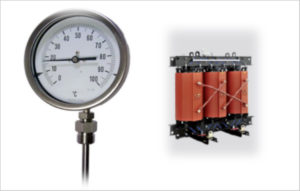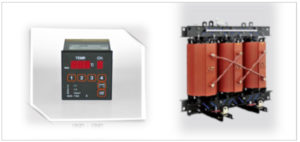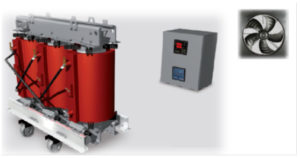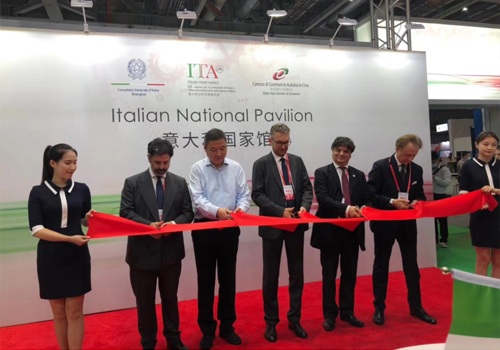THE EVOLUTION IN TEMPERATURE CONTROL: TOWARDS CONNECTIVITY

Temperature control, evolution and connectivity: in these three words there is the story of 40 years of growth and innovation in the temperature control of electrical machines, in particular of distribution transformers.
Over time it has become of fundamental importance, the possibility of containing the temperature of the dry/resin transformer for the protection of the same, of the system and - last but not least - for safety reasons.
1980s: the bulb thermometer

In the 1980s, the temperature was controlled mechanically, using the bulb thermometer.
The electromechanical device is not able to carry out self-diagnosis, therefore the fault is only noticed after the event has occurred.
No malfunction signaling warns the operator in advance, allowing prompt intervention.
Early 90s: pre-alarm and electronic control unit

At the beginning of the 90s it was possible to remedy the lack of timely signals from the bulb thermometer thanks to the electronics. The device - thanks to the pre-alarm - warns the operator of a malfunction as soon as this occurs, prompting a timely intervention that prevents the critical situation from reaching (failure and consequent damage).
The electronic control unit warns the operator by displaying an alarm signal on the display or by switching a relay for reporting faults.
Late 90s: control unit cooling with forced ventilation

At the end of the 1990s, the control and monitoring function of forced ventilation system was also integrated into the temperature control unit.
It is in this way that, from this moment on, artificial cooling of the transformer is managed.
From local control to remote control: the connectivity
We are nowadays.
From the concept of simple remote control, we move on to a wider reality that complies with the needs of today and tomorrow: providing information according to a standard valid for all models and using the most common communication protocols (Modbus, Ethernet, WiFi, etc.) allowing therefore, the implementation of commands resulting from centralized processing and analysis.
Predictive data analysis thanks to the control unit
The control unit receives, processes and manages the data regarding the temperature and returns them to the operator in a predictive form, allowing him to improve the reliability of the machinery, optimize maintenance and increase efficiency.
Smart devices for the temperature monitoring
It is with this in mind that TECSYSTEM, for forty years, has continued to operate on its products dedicated to transformer temperature monitoring, developing intelligent instruments, able to receive commands and transmitting information.

 FIBER OPTICAL SYSTEM
FIBER OPTICAL SYSTEM




